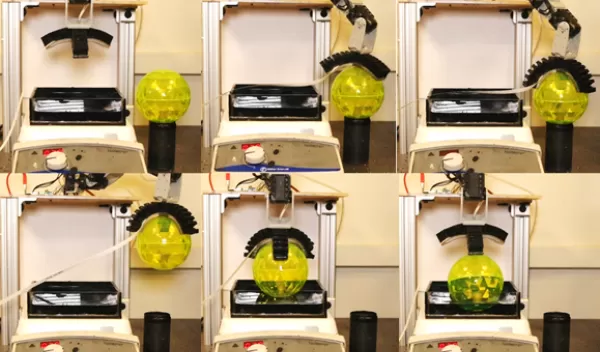
Robot arm 'tastes' with engineered bacteria
A robotic gripping arm that uses engineered bacteria to "taste" for a specific chemical has been developed by engineers at the University of California, Davis, and Carnegie Mellon University. The gripper is a proof of concept for biologically based soft robotics.
"Our long-term vision is about building a synthetic microbiota for soft robots that can help with repair, energy generation or biosensing of the environment," said Cheemeng Tan, a biomedical engineer at UC Davis. The work was published in the journal Science Robotics.
Soft robotics uses lightweight, flexible and soft materials to create machines that match the versatility of living things; soft robot designs often draw inspiration from nature. Adding living cells to soft robots brings researchers another step closer to creating biological-mechanical hybrid machines.
"By combining our work in flexible electronics and robotic skin with synthetic biology, we are closer to future breakthroughs like soft biohybrid robots that can adapt their abilities to sense, feel and move in response to changes in their environmental conditions," said Carmel Majidi, a co-author and mechanical engineer at CMU.
The research is funded in part by NSF’s Directorate for Engineering, which invests in studies to advance the manufacturing of cells and cell-based products.
"Cells have many natural capabilities that hold promise for sensing, health care, energy and other uses," said Aleksandr Simonian, an NSF program director for the Engineering of Biomedical Systems. "NSF supports research to understand and harness cell functions -- as well as to reliably manufacture cells -- so in the future these biological capabilities can be applied in many areas of the economy and make a difference in people’s lives."


